“Three Colombian Associations Use Honey, Coffee and Whole Cane Sugar Production to Bend Fate”
Almost six years after the end of the armed conflict in Colombia, three associations are telling tales of courage, perseverance, and determination. With the help of the Colombia Deputy Superintendence for Industrial Property, Apícola La Serranía, CAIKE, and Santa Balsa are registering a trademark that will help them get recognition for their work and their products, strengthen their presence in the national market, and help raise the standard of living of their members.
CAIKE and Santa Balasa are from Tolima, a Colombian department located in the Center-West of the country while Apícola La Serranía is from Santander. Both regions used to be controlled and ruled by the Colombian Revolutionary Armed Forces, also known as FARC for over four decades. In 2016, a peace agreement was signed, between the FARC and the Colombian government. The civilian population deeply suffered from the armed conflict and many people were displaced and had to flee rural areas to ensure their safety.
Apícola La Serranía, Making Honey, Mending Souls
Antonio Blanco Pinzón arrived in the area of Santander in 2000, with three hives, and an inspiration. At that time, the area was in the hands of the FARC and sat in the middle of an armed conflict where illegal mining and illicit crops were rife. Raising bees appeared incongruous to people in the area. However, for Antonio, raising bees was an opportunity to generate income, but also was a form of therapy, lifting peoples’ minds off the troubles around them.
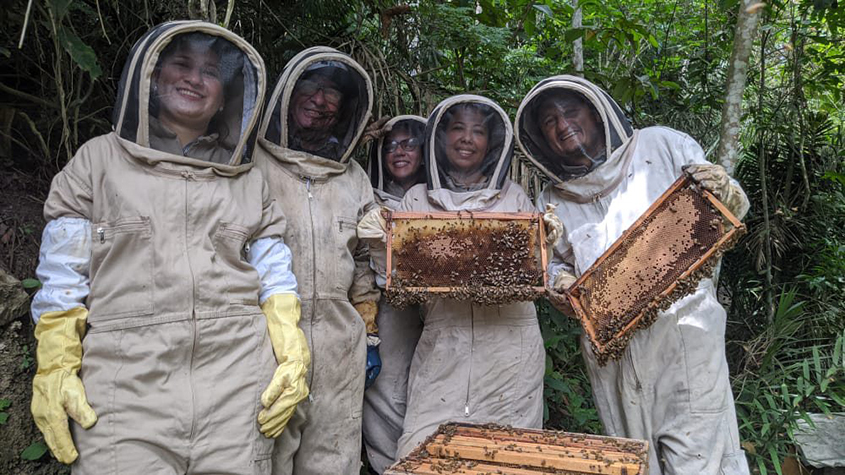
In time, more and more people joined him, first as a hobby, then gradually as an economic activity. In 2002, he registered his company, and in 2017, an association was set up with 18 people. Now named Apícola La Serranía, the association has 48 members, mostly young women living in rural areas and victims of the armed conflict, owning some 60 hives.
Antonio works with his daughter Zuleyma Blanco, a 24-year-old industrial engineer who decided to take the activity to an entrepreneurial level, following a family heritage of producing honey. Zuleyma underlined the persisting difficulties linked to being in a post-conflict area, engaging people in beekeeping, and stopping them from burning soil once used for the cultivation of drugs.
The members of Apícola La Serranía have a yearly production of between 35 and 40 kilograms of honey per hive, although not enough to go beyond a side economic activity. The honey produced is multi-floral and the hives are located as far away as possible from areas that have been contaminated by illegal mining.
Each member of the association is in charge of his/her own production and the commercialization of the products. Technical equipment to gather the honey, filter, and purify it, is shared between members.
Protecting bees through environment preservation and conservation
Beyond honey production, the association seeks to preserve and conserve the environment, planting trees to keep bees in their natural habitat, producing better quality honey, conserving water and resources, and raising awareness of the importance of bees’ pollination.
Trademarking Apícola La Serranía for product differentiation
The association is looking at strengthening its infrastructure and is working on a marketing strategy. The Apícola La Serranía trademark is currently being registered but the logo has been used for years by all association members. Zuleyma registered a different trademark, derived from the association’s logo for her micro-enterprise, a parallel company producing and marketing honey.
Most of the honey is currently sold directly within local communities of the region and is starting to be known nationwide. According to Antonio, “The success of the trademark registration would imply a 180-degree change within the association. Specifically, because it would allow the association to position itself and be further recognized on the market”. The trademark would also highlight the characteristics of the honey and its quality. The association already has a “green stamp” insuring that the product is sustainable and a hundred percent natural.
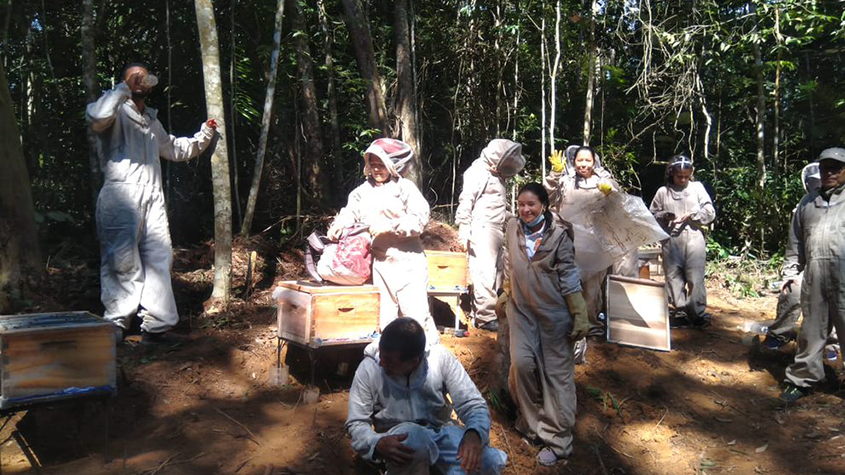
For the future, the association hopes to be able to invest in its own laboratory so that analysis of the product, too expensive to consider if conducted by third parties, can be carried out so the honey complies with international standards and reaches export markets.
CAIKE, Providing Employment to Indigenous Community
José Roberto Quijano Muñoz is the legal representative of CAIKE (Ethnic Association for Development, Productivity, Culture and Education of the Indigenous Cabildo Amoya), located in Chaparral. The association has different activities: the production and the industrialization of coffee, trout farming, and ethno tourism.
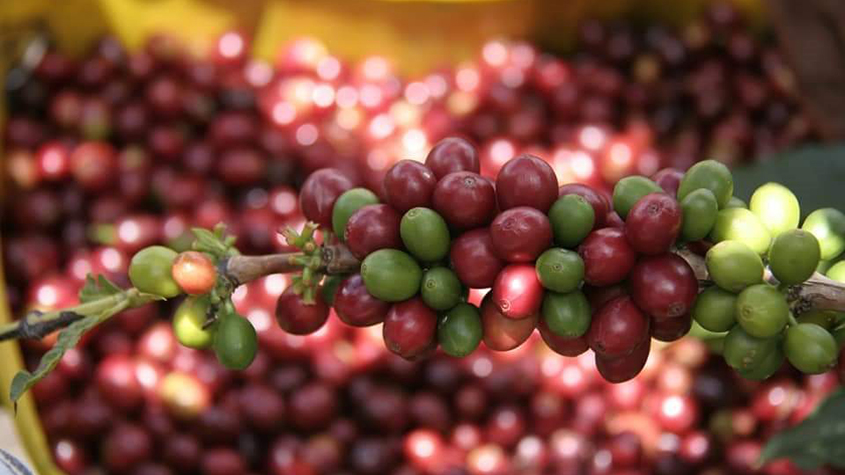
José Roberto is a member of the Cabildo Indigenous peoples. The indigenous community had never had the chance to engage in economic activities or within an association before CAIKE, he said. The creation of the association in 2021 was facilitated by the Colombian State (Special Administrative Unit of Solidarity) and followed training sessions provided by the National Park of Panaca to strengthen the entrepreneurial capacities in the community.
The association has 87 members but impacts over 325 people, most of them indigenous women.
CAIKE – Coffee production and trout farming
CAIKE’s members are in charge of producing the coffee and the trout. The roasting and packaging of the coffee, as well as the process to debone and vacuum-pack the trout is done by third parties that have the necessary technical equipment. José Roberto underlined the training that the association members received for trout farming and the generous contribution from the Colombian State through the Rural Development Agency, as well as the Panaca Foundation, the Government of Tolima, and the SENA National Apprenticeship Service (around US$1million) that allowed CAIKE to get access to the basic necessary equipment and infrastructure.
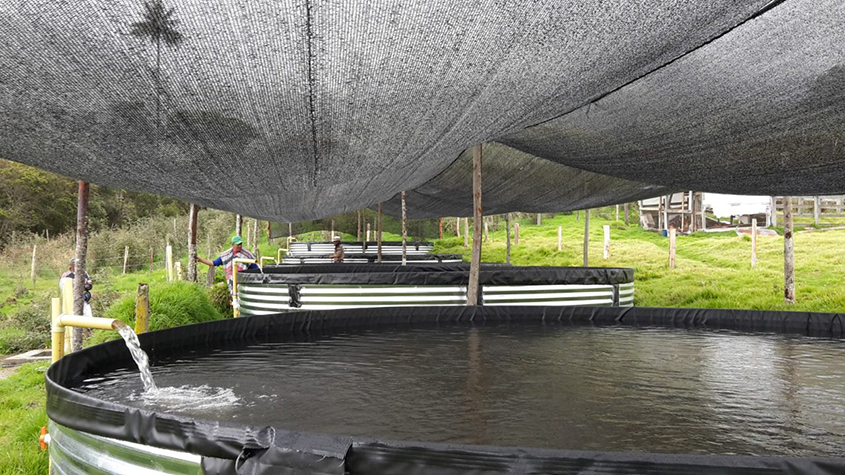
The association ensures the commercialization of the final products. The trout, some 14 tons a year, is sold in vacuum-packed bags, but also fresh, in the city of Ibagué, while the coffee is getting better known in the region, being sold in shops in the local community in Chaparral, but also as far as Bogota. CAIKE has so far been unable to distribute its coffee in large shops and supermarkets nationwide because their current production volume and frequency fall short of those shops’ requirements. The association is however seeking to expand its reach, in particular through social media.
Ethno Tourism in Chaparral
CAIKE is also trying to promote Ethno tourism in the region, highlighting its environmental characteristics and its ecology. Most ethno tourists are from Brazil, Argentina, Chile, Germany, and Mexico.
Jobs for Indigenous people, giving them access to social protection
One of the main goals of the association is to generate formal employment for members. Indigenous peoples could only dream of having access to formal employment, which would grant them access to health, and retirement benefits, or join an association, according to José Roberto. Another goal is to attract young people to work with them and keep them out of trouble.
Getting people to engage in the market from within an association has been challenging, said José Roberto. People were skeptical and fearful. Launching the association and consolidating it was also a challenge, he added, in particular, accessing finance from public entities, and getting all necessary permits such as access to water, and land use.
Trademark – The First Step to Exporting CAIKE coffee
Having a trademark registered successfully would be the first step to their exporting strategy, said José Roberto. CAIKE is currently in contact with Chile, the United States, some other countries in Latin America, and the European Union that have shown interest in its coffee.
“CAIKE coffee is simply the best in the world,” José Roberto proudly said. The coffee takes its characteristics from the microclimate of the region and the volcanic qualities of the soil. The association is working towards the recognition of the specificities of the CAIKE coffee produced by the indigenous community with a specific denomination of origin. CAIKE produces Arabica, a Colombian variety that is recognized by the National Coffee Federation, and Robusta. CAIKE is also working on new varieties of coffee with particular properties to accommodate climate change and resist diseases. The crops are produced sustainably without any chemicals, as CAIKE’s focus is on quality over quantity.
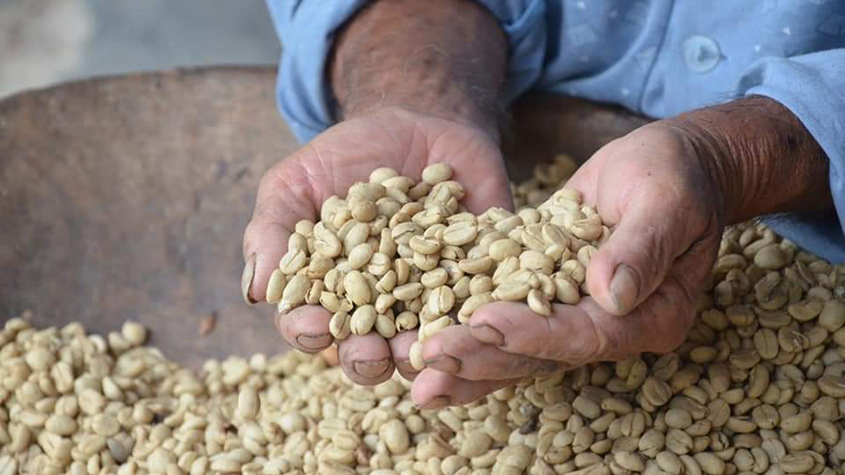
Beyond the sustainability of the association and selling and exporting their products, the most important José Roberto said, remains that the peace is maintained. As long as the peace agreement is respected, “CAIKE has all it needs to carry on with its work and expansion and follow the dream for which the association was created: increasing the quality of life of the indigenous community as a whole”, he said.
Santa Balsa, From Coffee to Sugar Cane
Jhon Jorge Diaz was forced to flee his native Tolima region with his family and go to a large city for a couple of years during the armed conflict. However, his whole world was agriculture and he wanted to go back to being a farmer. When he came back to Balsillas de Ataco in early 2000 to reclaim his land, he found out that cultivating coffee was becoming more difficult in particular due to climate change. He started introducing the idea among the farming community that sugar cane would be a more sustainable choice than coffee.
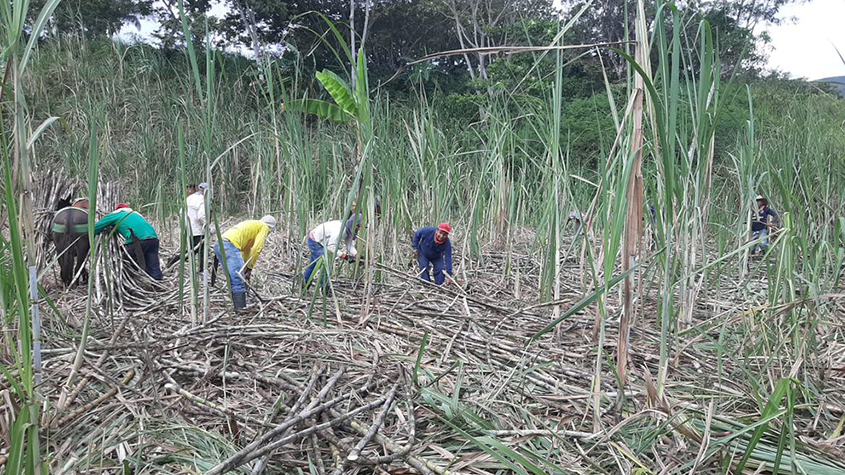
However, the switch did not come naturally and convincing the community to grow and cultivate sugar cane of which they knew nothing took some time. Because Jhon was well known and trusted, the community eventually followed the change he proposed, and Santa Balsa was created in 2010.
Santa Balsa Panela, a Colombian Delicacy
The product that Santa Balsa commercializes is Panela, a typical Colombian delicacy. Panela is made out of the juice of unrefined sugar cane. The juice is then boiled and evaporated and hardened into blocks that look like bricks of solid brown sugar. Colombian use it to add flavor and sugar to drinks, like the aqua panela, to other food, and some even consume it directly, as a sweet.
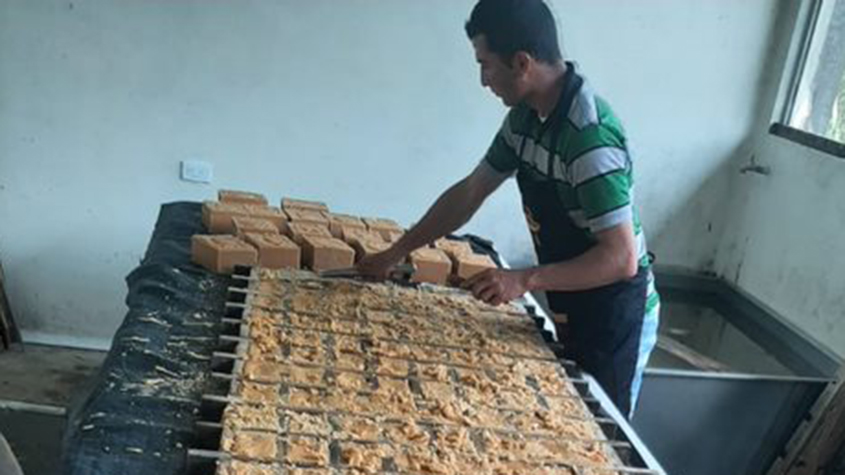
Some 100 families are now cultivating sugar cane, involving 400 people working in the association. Jhon underlined the role women have played in the success of the association. Each producer works his plot of land, while larger plots are shared between several families.
Panela has become the main income for most members of the association, providing the security of a regular income, as each family is involved in every stage of production, and receives income for each of them.
Traditional Panela Production
Once harvested, the sugar cane is crushed using a shared industrial “trapiche” (mill) which belongs to the association. Most families also have artisanal trapiches. Some 145 tons of panela are produced per year and are sold in neighboring cities.
The biggest advantage of sugar cane is that it can be cultivated all year round. The climate conditions and good access to water allow several harvests a year, ensuring the constant production of panela.
Trademark and organic certification to export Santa Balsa Panela
Having a trademark for the panela is a long-held dream for Jhon. Once the trademark is registered, the Santa Balsa panela can be clearly recognized on the market nationwide and someday globally, he said.
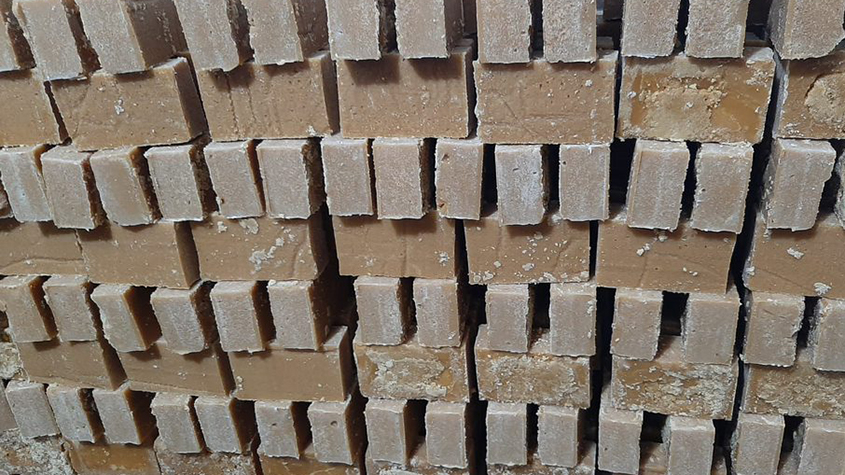
Santa Balsa’s panela is a hundred percent organic. The sugar cane juice is cleaned with carijo, a native Colombian plant, and Santa Balsa is currently seeking organic certification for its panela.
With the trademark and the organic certification, Jhon hopes to fulfill another one of his dreams: exporting panela to the United States, Europe, and other countries.
One of the most important goals of the association remains for its members to lead a comfortable life… “maybe even buy a car and go places,” he said. The road to setting up the association and making it sustainable has not always been easy, but beyond the bad seasons, the COVID-19 pandemic, the most important thing is that they do not have to repeat what they had to go through during the armed conflict, and they never have to flee again, Jhon said.
Role of the Superintendency of Industry and Commerce
The Superintendency of Industry and Commerce (SIC) had a key advisory role in the branding strategy of the three associations. The SIC provided personalized guidance, identifying which intangible assets could be protected with intellectual property so that their products are clearly recognizable and identifiable on the market. In particular, the SIC provided information on the types of trademarks, the choice of the classification of the products and/or services to be identified, as well as the step-by-step instructions for filling out the application. SIC also established a preferential rate for the beneficiaries of where they only pay 7% of the official rate.Of particular interest to the SIC is to promote and bring the National Industrial Property System closer to companies or associations with productive projects in the areas affected by the armed conflict.
Source: WIPO

 Client Focus
Client Focus